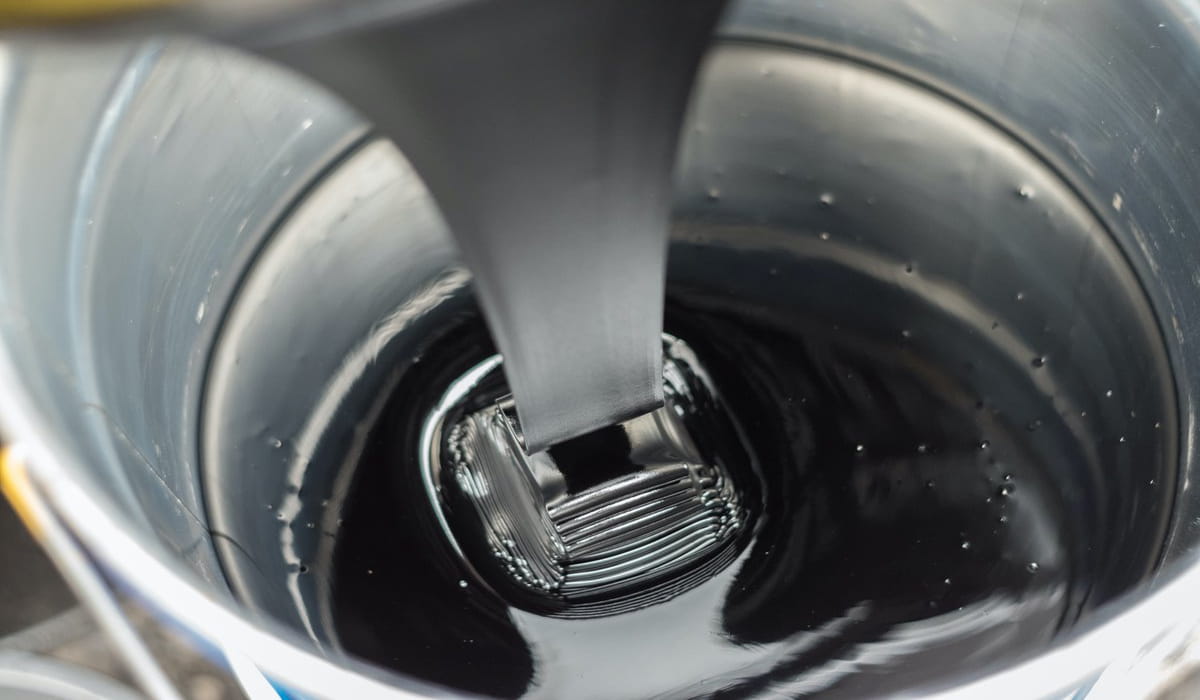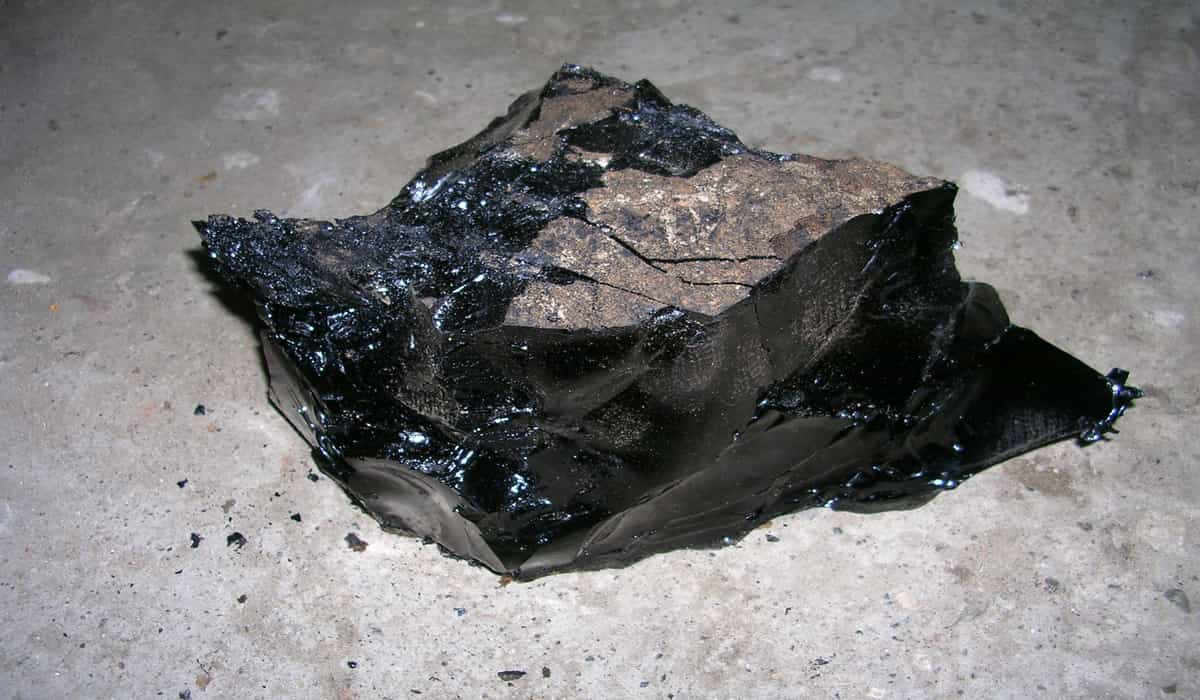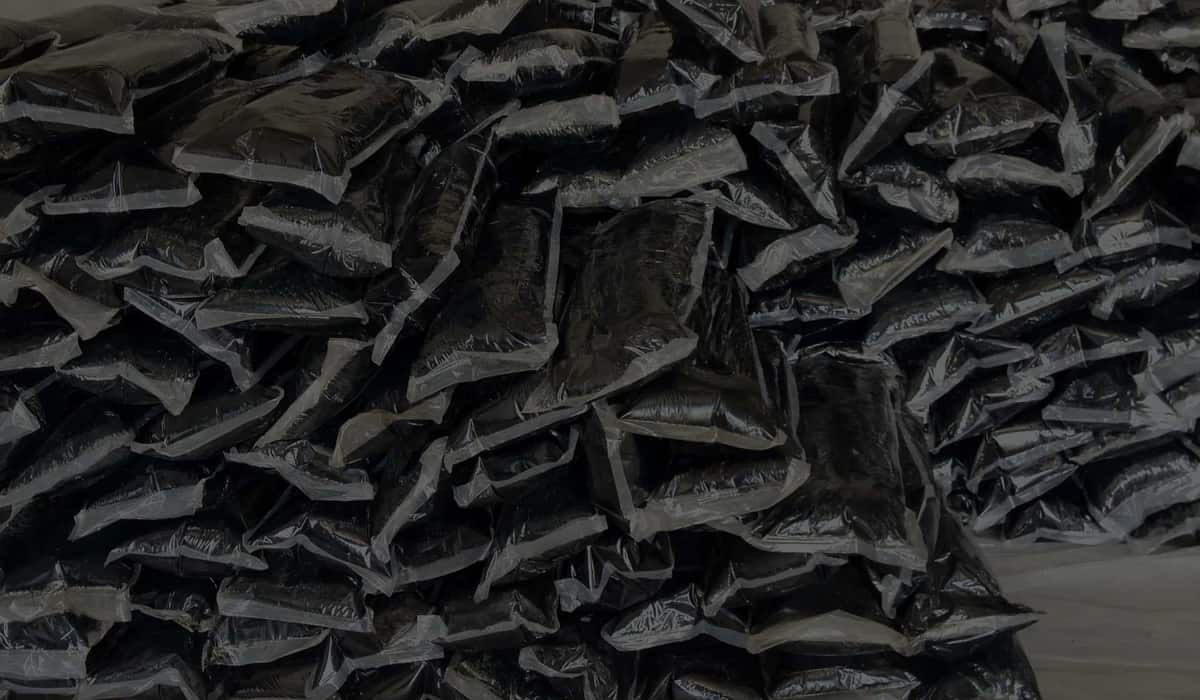Polymer modified bitumen (PMB) is a mixture of 60/70 bitumen and specific grades of styrene-butadiene styrene SBS at very specific temperatures, pressures and oxidized grades. Polymer modified bitumen is less susceptible to temperature, so it does not flow in hot summer and does not crack in cold winter because it is resilient even at low temperatures. Polymer modified bitumen (PMB) has high direct stress properties and high viscosity, so it adheres to aggregates and does not separate. Polymer modification of bitumen has been a common practice since the 1980s to reduce the exposure of bitumen (and pavement) to high and low temperatures. Since oxidized bitumen has different uses in different types of industries, this article will discuss some of the important uses of oxidized bitumen. Bitumen oxide is used in the gas and petroleum industry as a coating material for pipelines and pipe fittings in oil and gas pipelines. electrical industry. Bitumen oxide is used as a sealant in wire coating. Blown bitumen is also used in the waterproofing industry as roofing felt in factories and is the first material component to produce waterproof roofing felt sheets. There is at least one other use of bitumen for road paving and oxidized bitumen for asphalt as a sound dampening layer used as one of the main materials for creating sound insulation layers. Pavements designed and built for heavy traffic and extreme weather conditions require specially designed bitumen grades. 
Polymer Modified Bitumen
Polymer modified bitumen (PMB) is bitumen (asphalt) combined with one or more polymeric materials. This modification aims to improve the mechanical properties of the bituminous material. Polymer modified bitumen is commonly used in road pavements, especially pavements intended to withstand heavy traffic and harsh weather conditions. This material is also used as a sealant for residential roofing applications. PMB is typically manufactured by fusing bitumen with a styrene-butadiene styrene (SBS) copolymer. The addition of polymers makes bitumen inherently more flexible. Desirable properties of polymer modified bitumen include improved strength, cohesion, and resistance to fatigue and deformation. PMB is also less sensitive to temperature than regular bitumen. This is especially important for paving applications. Because the material does not flow or soften at high temperatures, it remains workable and flexible at low temperatures. Advances and challenges in the field of bituminous polymer modification for road construction over the past 40 years are reviewed in this paper. A chronological history of polymer bitumen modification is presented. Polyethylene (PE), polypropylene (PP), ethylene vinyl acetate (EVA), ethylene butyl acrylate (EBA), styrene-butadiene styrene (SBS), styrene-isoprene-styrene (SIS) and styrene-ethylene/butylene-styrene (SEBS). ). Although all of these polymers improve the properties of bitumen to some extent, some of them limit the development of future bitumen polymer modifications, such as the high cost, low aging resistance, and poor storage stability of polymer modified bitumen (PMB).  Still some shortcomings. Researchers have experimented with various methods to remove these deficiencies. This paper reviews several technological advances to remove deficiencies, including saturation, vulcanization of sulfur, addition of antioxidants, use of water-repellent clay minerals, recruitment, and application of reactive polymers. The future development of polymers for modified bitumen was also analyzed. Since it is currently difficult to fully achieve all expected PMB properties simultaneously, this paper provides some compromise recommendations. Some of them significantly enhance the property at acceptable high costs, and significantly reduce costs with relatively poor properties and their combinations. Functionalization has been highlighted as a promising method to enhance the properties of the polymers currently in use and to develop new types of polymer modifiers that will have greater success in the future. We also suggest that future research on bituminous polymer modifications should focus more on developing features to improve overall adhesion, long-term performance and recyclability. Of great importance to the corrosion industry are the improved water-repellent properties of PMB. The application of PMB to steel pipes prevents water and other electrolyte-rich liquids from coming into contact with metal substrates. This property makes the PMB coating ideal for barrier protection in aggressive environments. Bitumen has been used as a building material for centuries and remains a valuable engineering material in many modern applications, and to this end, a number of studies have been conducted. A method for preparing a polymer modified bituminous bond formulation from PMB largely free of cross-linking agents by heating the bituminous components in an inverted tank to a temperature of 185°C to 221°C. Addition of the polymer block composition to the bituminous component during the stirring of the bitumen component to form a homogeneous mixture of the bitumen component and the formation of the copolymer block; Continue to stir the homogeneous mixture while stirring to form a polymer-modified cured bitumen bond formulation.
Still some shortcomings. Researchers have experimented with various methods to remove these deficiencies. This paper reviews several technological advances to remove deficiencies, including saturation, vulcanization of sulfur, addition of antioxidants, use of water-repellent clay minerals, recruitment, and application of reactive polymers. The future development of polymers for modified bitumen was also analyzed. Since it is currently difficult to fully achieve all expected PMB properties simultaneously, this paper provides some compromise recommendations. Some of them significantly enhance the property at acceptable high costs, and significantly reduce costs with relatively poor properties and their combinations. Functionalization has been highlighted as a promising method to enhance the properties of the polymers currently in use and to develop new types of polymer modifiers that will have greater success in the future. We also suggest that future research on bituminous polymer modifications should focus more on developing features to improve overall adhesion, long-term performance and recyclability. Of great importance to the corrosion industry are the improved water-repellent properties of PMB. The application of PMB to steel pipes prevents water and other electrolyte-rich liquids from coming into contact with metal substrates. This property makes the PMB coating ideal for barrier protection in aggressive environments. Bitumen has been used as a building material for centuries and remains a valuable engineering material in many modern applications, and to this end, a number of studies have been conducted. A method for preparing a polymer modified bituminous bond formulation from PMB largely free of cross-linking agents by heating the bituminous components in an inverted tank to a temperature of 185°C to 221°C. Addition of the polymer block composition to the bituminous component during the stirring of the bitumen component to form a homogeneous mixture of the bitumen component and the formation of the copolymer block; Continue to stir the homogeneous mixture while stirring to form a polymer-modified cured bitumen bond formulation.  There are different types of polymers used in this process and they are selected based on specific formulations. Some of these polymers are: Polyethylene Wax (PW). styrene-butadiene styrene copolymer (SBS); Rubber crumbs (CR) and EVA. Polymer Modified Bitumen (PMB) is a specially engineered grade of bitumen used to create sidewalks, high traffic roads and residential roofing solutions to withstand extreme weather conditions. PMB is a regular addition of bitumen and polymer in a high shear mixer that gives bitumen strength, high cohesion and resistance to stress, cracking and deformation making it a suitable material for substructure. One improvement that has led to desirable results is the addition of polymers to the bitumen. The polymers improve the flexibility of bitumen and thus offer several advantages when used in bitumen-based applications. Styrene-butadiene styrene (SBS) acts as a linker modifier and is known to extend the life of pavements that are routinely subjected to a variety of challenging loads, such as high traffic loads and high thermal stresses. Other advantages of PMB when used in paving applications include:
There are different types of polymers used in this process and they are selected based on specific formulations. Some of these polymers are: Polyethylene Wax (PW). styrene-butadiene styrene copolymer (SBS); Rubber crumbs (CR) and EVA. Polymer Modified Bitumen (PMB) is a specially engineered grade of bitumen used to create sidewalks, high traffic roads and residential roofing solutions to withstand extreme weather conditions. PMB is a regular addition of bitumen and polymer in a high shear mixer that gives bitumen strength, high cohesion and resistance to stress, cracking and deformation making it a suitable material for substructure. One improvement that has led to desirable results is the addition of polymers to the bitumen. The polymers improve the flexibility of bitumen and thus offer several advantages when used in bitumen-based applications. Styrene-butadiene styrene (SBS) acts as a linker modifier and is known to extend the life of pavements that are routinely subjected to a variety of challenging loads, such as high traffic loads and high thermal stresses. Other advantages of PMB when used in paving applications include:
- Enhanced rigidity
- Improved resistance to deformation
- Improved resistance to cracking and peeling
- increased durability
- Improved water resistance

Oxidized Bitumen Grades
Blown grades of bitumen or oxidized bitumen are produced by passing air through the saturated grades. This process simply makes the bitumen a solid with more rubber-like properties than the original formula. Hard bitumen under controlled temperature conditions is used as an anti-slip layer in the piling industry, in the manufacture of roofing felt, in the roofing and waterproofing industry, in sound-deadening felt, under vehicle seals in the automobile industry, in protecting electrical cable connections, etc. It is widely used as a compound. joint fillers, sealants, and more. It is also used to seal saw cuts and joints where expected movement is minimized. It is also used in the production of bituminous marine pastes for oil and gas pipeline joints. The most common scores are 95/25, 85/35, 90/40, and 115/15. We can also produce other grades of blown bitumen according to customers' requirements. The asphalt in this bitumen is polymerized by blowing air, which makes this bitumen rubbery. Because of this rubbery property, this bitumen is called bitumen rubber, and the letter R indicates this. These numbers indicate the point of softening and penetration. For example, R75 / 25 indicates a softening point of 75 and a degree of penetration of 25 for this bitumen. The high softening temperature of blown bitumen makes it an excellent sealant to prevent bleeding in high temperature applications. Blown bitumen is broken into small pieces (for molded cake grades) and slowly heated to an application temperature of 220°C to 230°C. Blown bitumen is mainly used in the foundation industry as a non-slip compound for the production of under-car sealants in the automotive industry. It is also used as a joint sealant and filler compound, besides being used to make roofing felt tissues and sound-deadening felt. In addition, blown bitumen is used in the production of bituminous marine pastries needed for oil and gas pipeline connections.  Blown bitumen is available in different grades such as 95/25, 85/25, 75/25, 90/40 and 115/15. Tavoil can also produce other grades of oxidized bitumen according to individual customer specifications. It has many uses such as road construction, hydropower projects, roofs, floors, mastics, oil and gas industry, and electrical applications. Roads: This kind of bitumen is suitable for road construction, road paving and road maintenance. It can be used as an additive along with binders in various types of asphalt for roads, highways, railways and parking lots. Hydropower projects: One of the canal lining materials is bitumen oxide. This type of bitumen can be used in other hydroelectric projects such as bridge and dam construction, hydraulic structures, dam liner protection, and sand stabilization. Roofing: Bitumen oxide can be used in felt roofs, shingle roofs, moisture barrier coating formulations, vehicle roofing compounds, liquid roofing coatings, and plastic cements. In general, it is ideal for insulating surfaces. Flooring: One of the main uses of oxidized bitumen is in flooring. Acid and alkali resistant bitumen putties can be used to protect surfaces from corrosion in chemicals, fertilizers, steel and many other plants. You can also repair wood floors. Oil and Gas Industry: This type of bitumen is very common in the oil and gas industry for coating pipelines to protect them from corrosion and rust. Electrical Industry: Oxidized bitumen is an adhesive for chips. The electrical junction box can be closed. It can be used in the manufacture of cables, lithium-ion batteries and wires.
Blown bitumen is available in different grades such as 95/25, 85/25, 75/25, 90/40 and 115/15. Tavoil can also produce other grades of oxidized bitumen according to individual customer specifications. It has many uses such as road construction, hydropower projects, roofs, floors, mastics, oil and gas industry, and electrical applications. Roads: This kind of bitumen is suitable for road construction, road paving and road maintenance. It can be used as an additive along with binders in various types of asphalt for roads, highways, railways and parking lots. Hydropower projects: One of the canal lining materials is bitumen oxide. This type of bitumen can be used in other hydroelectric projects such as bridge and dam construction, hydraulic structures, dam liner protection, and sand stabilization. Roofing: Bitumen oxide can be used in felt roofs, shingle roofs, moisture barrier coating formulations, vehicle roofing compounds, liquid roofing coatings, and plastic cements. In general, it is ideal for insulating surfaces. Flooring: One of the main uses of oxidized bitumen is in flooring. Acid and alkali resistant bitumen putties can be used to protect surfaces from corrosion in chemicals, fertilizers, steel and many other plants. You can also repair wood floors. Oil and Gas Industry: This type of bitumen is very common in the oil and gas industry for coating pipelines to protect them from corrosion and rust. Electrical Industry: Oxidized bitumen is an adhesive for chips. The electrical junction box can be closed. It can be used in the manufacture of cables, lithium-ion batteries and wires.  Oxidized bitumen has a high softening temperature, making it an excellent sealant to prevent bleeding in high temperature applications. Blown bitumen is broken into small pieces (for molded cake grades) and slowly heated to an application temperature of 220°C to 230°C. Oxidized bitumen is mainly used in the foundation industry as a non-slip compound for the production of undercarriage sealants for the automotive industry. It is also used as a joint sealant and filler compound, besides being used to make roofing felt tissues and sound-deadening felt. In addition, oxidized bitumen is used in the production of bituminous marine putties needed for oil and gas pipeline connections. Oxidized bitumen is available in various grades such as 95/25, 85/25, 75/25, 90/40 and 115/15. Oxidizer can also manufacture other grades of oxidized bitumen to individual customer specifications. Oxidized bitumen grades are suitable for saw cuts and sealing joints where minimal joint movement is expected. Wide temperature range prevents bleeding in high temperature applications. Bitumen oxide can also be used in industrial applications such as roofing, floors, putties, pipe coatings, and electrical applications. The Bitumen Oxide, Asphalt Oxide series are used in applications such as the waterproofing industry, carpet lining, corrosion protection, acoustic panels, and the paint industry among other applications.
Oxidized bitumen has a high softening temperature, making it an excellent sealant to prevent bleeding in high temperature applications. Blown bitumen is broken into small pieces (for molded cake grades) and slowly heated to an application temperature of 220°C to 230°C. Oxidized bitumen is mainly used in the foundation industry as a non-slip compound for the production of undercarriage sealants for the automotive industry. It is also used as a joint sealant and filler compound, besides being used to make roofing felt tissues and sound-deadening felt. In addition, oxidized bitumen is used in the production of bituminous marine putties needed for oil and gas pipeline connections. Oxidized bitumen is available in various grades such as 95/25, 85/25, 75/25, 90/40 and 115/15. Oxidizer can also manufacture other grades of oxidized bitumen to individual customer specifications. Oxidized bitumen grades are suitable for saw cuts and sealing joints where minimal joint movement is expected. Wide temperature range prevents bleeding in high temperature applications. Bitumen oxide can also be used in industrial applications such as roofing, floors, putties, pipe coatings, and electrical applications. The Bitumen Oxide, Asphalt Oxide series are used in applications such as the waterproofing industry, carpet lining, corrosion protection, acoustic panels, and the paint industry among other applications.
